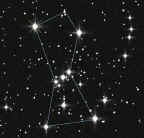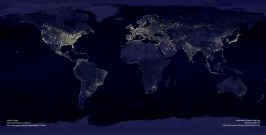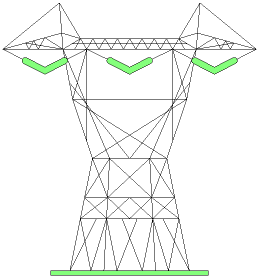
| Night Vision Summary: Night Vision is a NASA-supported program in which observers quantify the sky glow over their community. Families and teams use hand-held Sky Quality Meters (SQMs) to measure the the amount of light reflected back down to earth from multiple sites. They will manually plot the SQM readings on a county map and create "contour lines" of equal brightness. The baseline map may be used in the future to suggest changes in the local light pollution level. After discussing the trade-offs of lighting technology and the social decisions related to outdoor lighting, participants will report their findings to the community through self-designed presentations. |
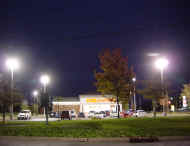 Night Vision Details:
Night Vision Details:
Energy wasted skyward is a global issue; Night Vision seeks local solutions. While minimizing light pollution is an emerging priority for the astronomy community, degraded night skies will affect future generations of families who gaze skyward at the stars. Unfortunately, several lighting issues are neither well known to the public nor well documented.
The Night
Vision project invites families to quantify the sky glow from multiple
locations using Sky
Quality Meters (SQMs), a new hand-held device that measures the sky
brightness in visual magnitudes per square
arc-second. The participants
will manually affix their data on a county-scale map and draw light
“contour lines” connecting equal values of sky glow. Future measurements against this valuable baseline data
would indicate change in light pollution levels. Night Vision is one step
toward preserving the heritage of the night sky.
Night Vision invites middle-school- and high-school-age
participants from the Boys & Girls Club of St. Joseph
County, from Girl Scouts from Singing Sands Council, from
AstroCamp at YMCA Camp
Eberhart, and others to participate.
At an organizational meeting, the Night Vision coordinator will introduce
participants to the project and to their respective roles. A parent/guardian must accompany
each participant while gathering data at night. All participants and their
parents/guardians must agree to abide by nighttime safety
practices.
The Night Vision coordinator will host a second meeting at the PHM Planetarium in
Mishawaka, 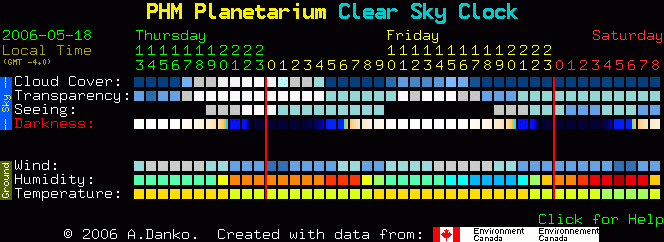 For
each SQM measurement, observers must also record time, location, observing
conditions, notes, and data from the PHM Clear Sky Clock (http://cleardarksky.com/c/PnnHrMPINkey.html).
For
each SQM measurement, observers must also record time, location, observing
conditions, notes, and data from the PHM Clear Sky Clock (http://cleardarksky.com/c/PnnHrMPINkey.html).
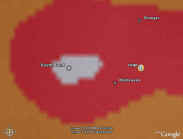 After observations are made, the group will meet to share
experiences, observations, and data.
They will collectively plot on a local map their SQM values. They will then draw light “contour
lines” of equal brightness and color-code their map comparable to the World Atlas of the Artificial Night
Sky Brightness (www.inquinamentoluminoso.it/worldatlas/pages/fig1.htm). The students will compare and
contrast the Atlas map with
their local sky glow map.
After observations are made, the group will meet to share
experiences, observations, and data.
They will collectively plot on a local map their SQM values. They will then draw light “contour
lines” of equal brightness and color-code their map comparable to the World Atlas of the Artificial Night
Sky Brightness (www.inquinamentoluminoso.it/worldatlas/pages/fig1.htm). The students will compare and
contrast the Atlas map with
their local sky glow map.
The group will have a dialogue about the relationship
between lighting technology and social decisions. Though the concerns of the
astronomy community are most obvious, all stakeholders in outdoor lighting
will be given consideration. The
Night Vision coordinator and the participants will collectively determine how they
will use their Night Vision experience to generate awareness of
lighting issues in the community.
Night Vision links:
-
Introduction and tutorial on Geographic Information System (GIS)
-
Third-grader offers safe advice about curbing light pollution
-
Globe at Night star count supports 2009 International Year of Astronomy
-
Students investigate lighting issues and share findings with classmates
Night Vision project coordinator Chuck Bueter develops informal education programs with support from the planetarium community. Among his projects are Paper Plate Education (http://analyzer.depaul.edu/paperplate) and Transit of Venus (http://www.transitofvenus.org/). Night Vision is supported in part by a PLATO grant from NASA's DePaul Space Science Center for Education and Outreach.
